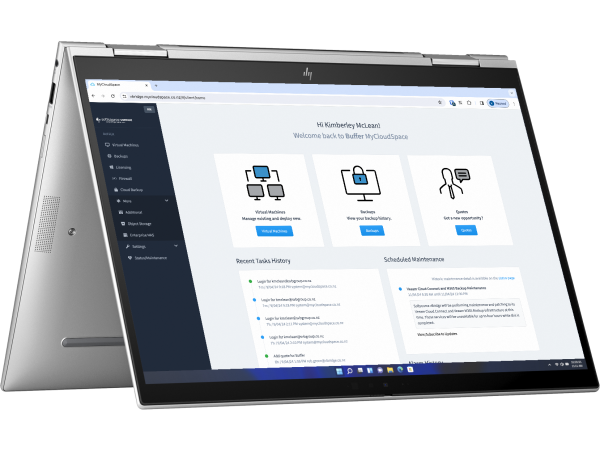CLOUD TECHNOLOGY
Stop letting IT costs dictate your innovation.
Many businesses face the challenge of balancing innovation with budget constraints, but you can break free from budget constraints and drive digital transformation with the "as a service" (AAS) model.
This approach allows you to consume technology on demand, paying only for the resources you utilise. It's about empowering your business with the flexibility, scalability, and cost-effectiveness needed to achieve your goals.
In this post, we'll unravel the intricacies of AAS and exploring the tangible advantages of consumption-based services.
Unraveling AAS (As a Service)
AAS, or "As a Service," represents a fundamental shift in how businesses consume technology. Instead of owning and managing IT infrastructure, software, or platforms, you access them over a network, typically the internet, from a provider. Here's a breakdown:
Service-Oriented Architecture
AAS is built on a service-oriented architecture (SOA), where components are designed as independent services that can be accessed and used by other applications or users. This modularity enables flexibility and scalability.
Cloud Delivery
Most AAS solutions are delivered via cloud computing solutions like MyCloudSpace, leveraging shared resources to provide cost-effective and scalable services.
This means that the physical infrastructure is managed by the provider, not the user.
Subscription-Based Model
AAS typically operates on a subscription-based model, where users pay a recurring fee for access to the services eliminating large upfront capital expenditures.
PLUS, users don't need to worry about server maintenance, software updates, or hardware upgrades.
Advantages of Consumption-Based Services
Cost Optimisation
Pay only for the resources you use, eliminating wasted spending on unused capacity and reduces capital expenditure (CapEx).
Scalability and Flexibility
Easily scale resources up or down as needed, adapting to changing business demands and enabling fast response to market fluctuations.
Increased Efficiency
Offloading IT management tasks to the provider, frees up internal resources to focus on strategic initiatives.
Enhanced Accessibility
Access services from anywhere with an internet connection, enabling remote work and collaboration, business continuity and flexibility.
Faster Deployment
Deploy new applications and services quickly, without the need for lengthy hardware procurement and installation processes, speeding up time-to-market and innovation.
Predictable Costs
Subscription based services allow for more predictable budgeting and better financial planning.
Access to Latest Technology
Providers handle upgrades, so you always have access to the newest and most up to date technology which means less downtime, user frustration and increased productivity.
By understanding these intricacies and advantages, businesses can make informed decisions about adopting AAS and consumption-based services to drive growth and efficiency.
Want to see AAS in action? Take our locally hosted GPU on Demand Service for a test drive.
Anything as a Service (XAAS)
Anything as a Service (XaaS) is a framework that revolutionises how businesses operate by making everything—from software to infrastructure—available as a service in the cloud. It’s an umbrella term that includes different “as a Service” models, each catering to specific layers of the technology stack, refering to the. delivery of solutions, applications, products, tools, and technologies as services. XaaS eliminates the need for extensive on-premise infrastructure, allowing businesses to leverage existing platforms and focus on their core activities. It’s flexible, scalable, and accessible globally.
Software as a service (SaaS)
Software as a service (SaaS) applies to any software application delivered via the cloud as a subscription-based offering. SaaS spans across a variety of online applications utilised through the internet every day. Users benefit from managed infrastructure, seamless updates, and easy accessibility via web browsers or mobile apps.
Infrastructure as a service (IaaS)
Infrastructure as a service (IaaS) is defined as the use of any IT hardware and software infrastructure components like compute power or storage utilized through the cloud in a flexible consumption or subscription-based model. Like SaaS, it’s an all-inclusive category that can span the entire IT infrastructure portfolio from compute to storage to networks.
Network as a service (NaaS)
Network as a service (NaaS) is different from SaaS and IaaS because it is much more specific and relates directly only to networking functionality. Unlike SaaS and IaaS, it refers to only networking hardware, software, and services delivered in a “cloud-like” motion, which implies subscription-based or consumption-based billing. Sometimes the term is extended to include the overall day-to-day operations and management of a network environment by a 3rd party, such as the vendor or vendor partner.
Platform as a Service (PaaS)
Platform as a Service (PaaS) is a cloud computing model that provides a complete development and deployment environment in the cloud. With PaaS, you can deliver everything from simple cloud-based apps to sophisticated, cloud-enabled enterprise applications. Developers, startups, SMBs, and enterprises benefit from its scalability, cost-efficiency, and focus on code.
